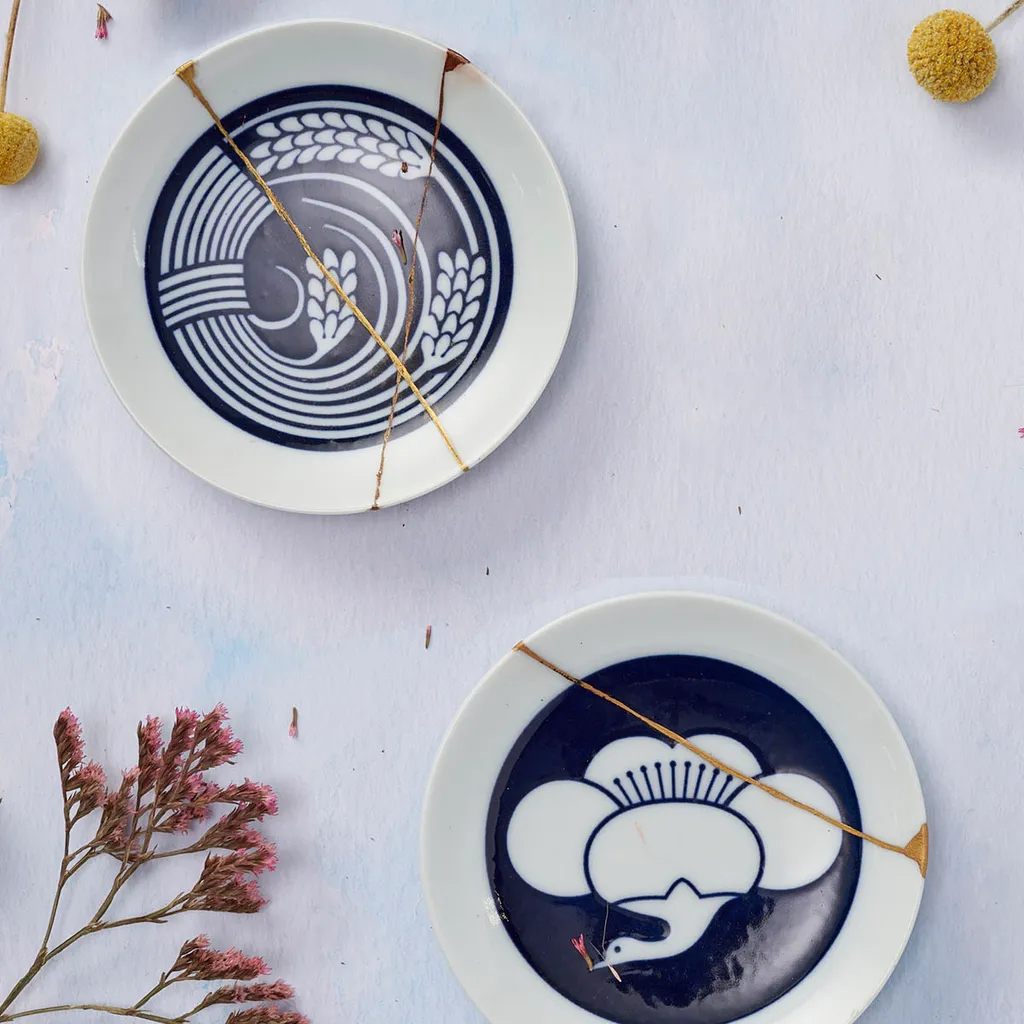Don’t throw away your broken plates and vases! Old ceramics can be rescued and turned into something magical with the Japanese art of kintsugi.
This clever technique repairs broken pottery without concealing the cracks, making them a feature instead. Read on to learn everything you need to know about this beautiful pottery technique – and how to use it to fix your broken pots.
What is kintsugi pottery?
Kintsugi is a Japanese technique where gold lacquer is used to repair broken pottery, which dates back to the 15th century. The idea is to highlight, not conceal, the cracks within the pottery. The flaws make the ceramics more beautiful and unique.
The practice has its roots in the Japanese wabi-sabi philosophy, which encourages people to embrace imperfections and understand that nothing is permanent.
As sustainability and reducing waste become more important, adopting practices such as kintsugi is a great way to get into mending and upcycling. Why throw something away if you can turn it into something that’s both attractive and practical?
Get started with a kintsugi kit
If you’re looking for a simple way to try kintsugi for the first time, picking up a kintsugi kit is a great option.
There’s a good selection of kintsugi kits available online, which are perfect for beginners to attempt. Check our pick of the best kintsugi kits to try this amazing technique for yourself.
Kintsugi: a how to guide for mending ceramics
Repair cracked or broken ceramics with the ancient craft of kintsugi – a decorative technique using urushi (lacquer), rice glue and metal powder.
Kintsugi repaired items should not be used in a microwave or dishwasher, nor be left to soak in water or used to hold contents with temperatures above 100°C. Although urushi is food safe, brass is not. Use sterling silver or 24ct gold leaf powder if you plan to use metal powder to finish plates used for food.


